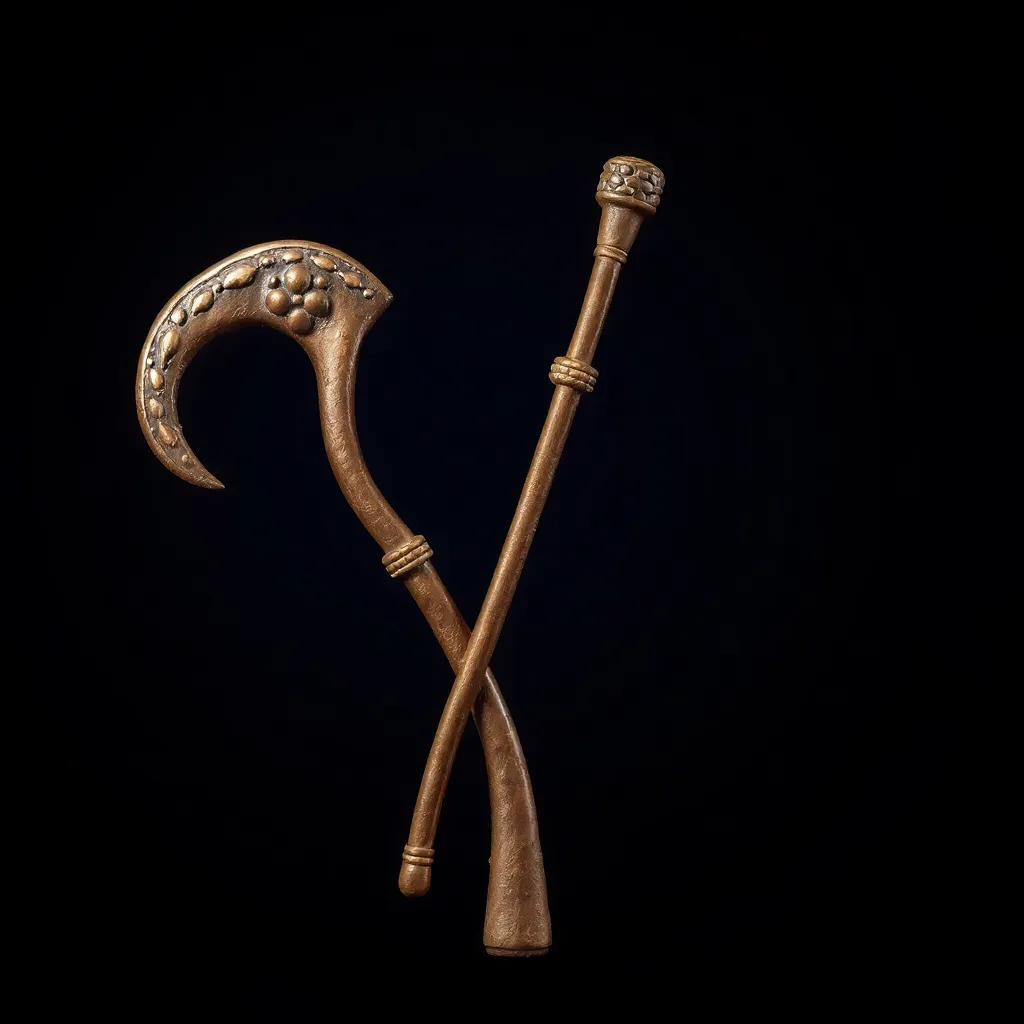The Significance of the Crook and Flail in Egyptian Amulets
I. Introduction
Egyptian amulets have long captivated the minds of historians, archaeologists, and enthusiasts of ancient cultures. These small objects, often crafted with care, were believed to possess protective qualities and were integral to the spiritual life of ancient Egyptians. Among the most significant symbols found in these amulets are the crook and flail, which hold deep meanings rooted in the mythology and governance of ancient Egypt.
This article aims to explore the significance of the crook and flail in Egyptian amulets, delving into their historical context, symbolism, and continuing legacy in both ancient and contemporary cultures.
II. Historical Context of the Crook and Flail
The crook and flail are two of the most recognized symbols of ancient Egypt, often associated with the authority of the pharaoh and the divine. Their origins can be traced back to early dynastic periods when they represented the dual aspects of leadership and protection.
These symbols were closely associated with Osiris, the god of the afterlife, and were often depicted in tomb art and funerary objects. The pharaohs would carry the crook and flail as emblems of their divine right to rule, signifying their role as shepherds of their people.
- Authorities of the Pharaohs: The crook symbolized the shepherd’s staff, representing the pharaoh’s role as a protector and guide.
- Divine Associations: Both symbols were closely tied to Osiris, emphasizing his role in governance, fertility, and the afterlife.
In essence, the crook and flail encapsulated the ideals of authority and governance in ancient Egyptian society.
III. Symbolism of the Crook
The crook, often depicted as a curved staff, represents several crucial aspects of ancient Egyptian life and spirituality. Its primary meanings include:
- Leadership: The crook signifies the role of the pharaoh as a leader and protector, guiding his people as a shepherd does with his flock.
- Protection: In amulets, the crook symbolizes the protective qualities that were believed to shield the wearer from harm.
As a symbol of guidance, the crook was commonly used in amulets crafted for the deceased, signifying the hope for protection in the afterlife.
IV. Symbolism of the Flail
The flail, a tool used for threshing grain, carries significant agricultural connotations in ancient Egypt. Its symbolism includes:
- Agricultural Fertility: The flail represents the fertility of the land and the prosperity that comes from successful harvests.
- Protection and Prosperity: In amulets, the flail was viewed as a tool that promotes abundance and safeguards the agricultural bounty.
The flail, therefore, not only symbolizes the sustenance of life but also the protective measures necessary to ensure ongoing fertility and success.
V. The Crook and Flail in Egyptian Mythology
The crook and flail hold significant places in Egyptian mythology, particularly concerning the myths surrounding Osiris. They symbolize the balance between the spiritual and physical worlds.
- Mythological Significance: In the context of Osiris, the symbols represent his role as a ruler of the afterlife, providing guidance and protection to souls.
- Duality and Balance: The crook and flail together embody the dual aspects of governance: nurturing care and the enforcement of order.
These symbols were also integral to funerary practices, as they were placed in tombs to ensure that the deceased would be protected and guided in the afterlife.
VI. The Use of Crook and Flail in Amulets
Amulets featuring the crook and flail were crafted from various materials, including gold, silver, and stone. Common designs included:
- Small Figurines: Amulets shaped like the crook or flail were worn to invoke their protective qualities.
- Inscribed Talismans: Some amulets featured inscriptions that highlighted the symbols’ significance for the wearer.
The intended qualities of these amulets were protective and empowering, designed to invoke the strength of the pharaoh and the divine guidance of Osiris. Archaeological findings have unearthed numerous examples of these amulets, often discovered in tombs, highlighting their importance in ancient Egyptian burial practices.
VII. Modern Interpretations and Legacy
The crook and flail continue to inspire contemporary culture and art, symbolizing ancient wisdom and authority. Their legacy is reflected in various ways:
- Contemporary Art: Artists often draw on these symbols to evoke themes of leadership and protection.
- Spiritual Practices: Modern spiritual movements frequently incorporate ancient symbols, including the crook and flail, into their rituals and beliefs.
The fascination with these ancient symbols maintains their relevance today, prompting ongoing interest in their meanings and interpretations.
VIII. Conclusion
The crook and flail are more than mere symbols; they encapsulate the essence of ancient Egyptian culture, representing leadership, protection, and the balance between life and the afterlife. Their significance in amulets underscores their role in the spiritual and daily lives of ancient Egyptians.
As we reflect on these enduring symbols, it becomes clear that they invite us to explore the richness of Egyptian mythology and the profound connections between ancient beliefs and contemporary spirituality. The legacy of the crook and flail continues to inspire curiosity and reverence for the ancient world and its timeless wisdom.




